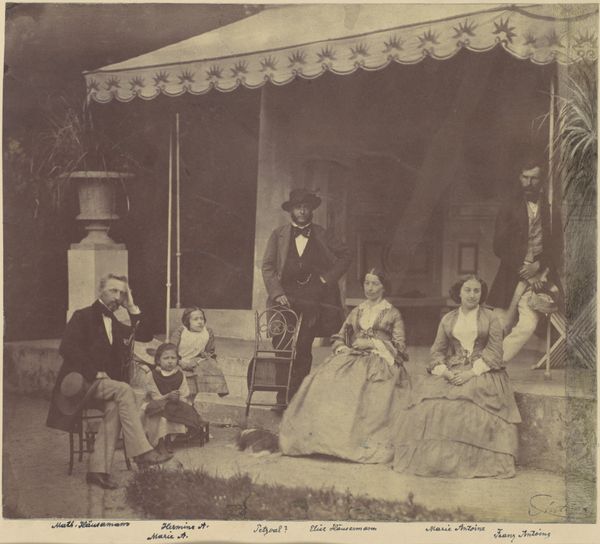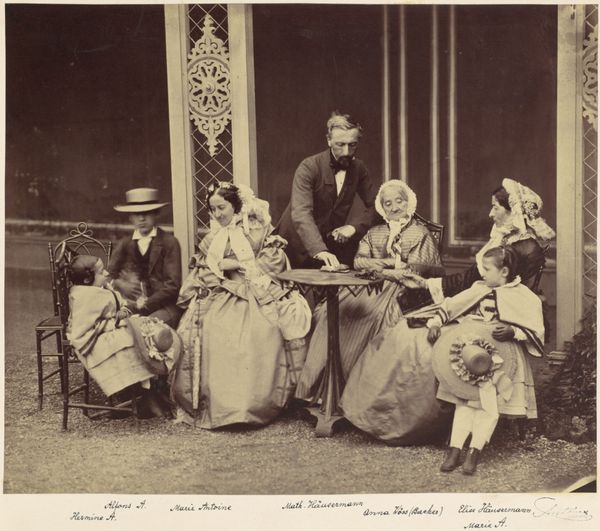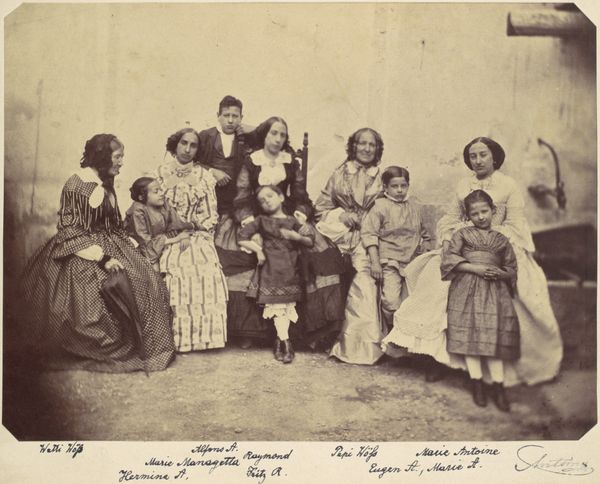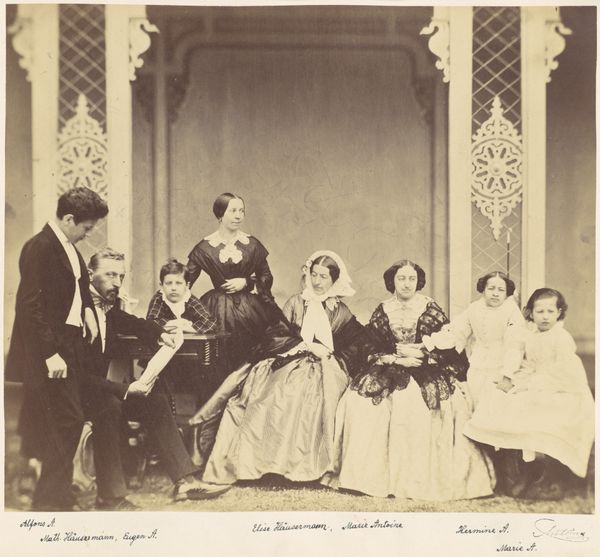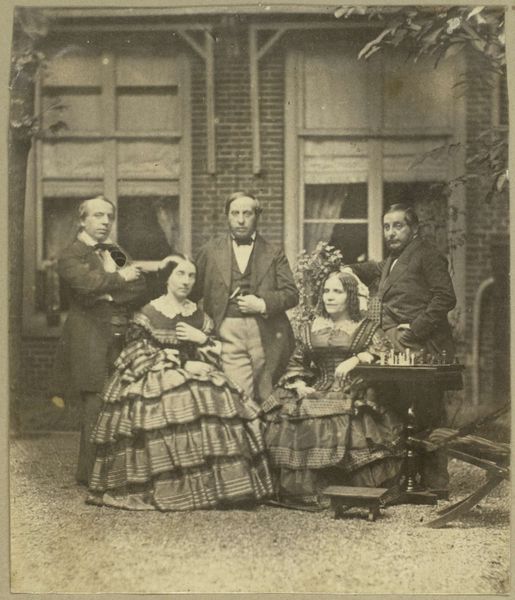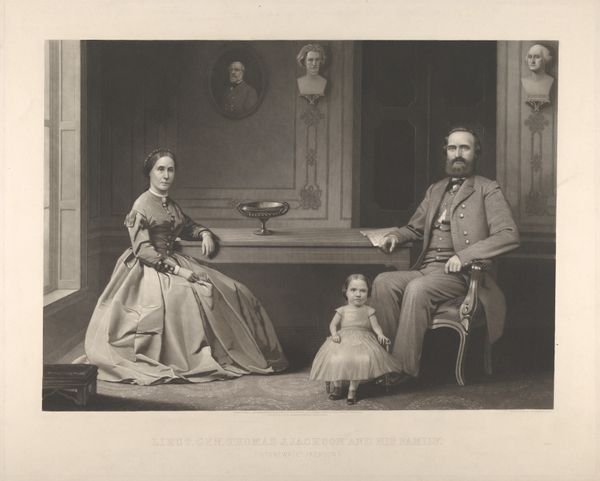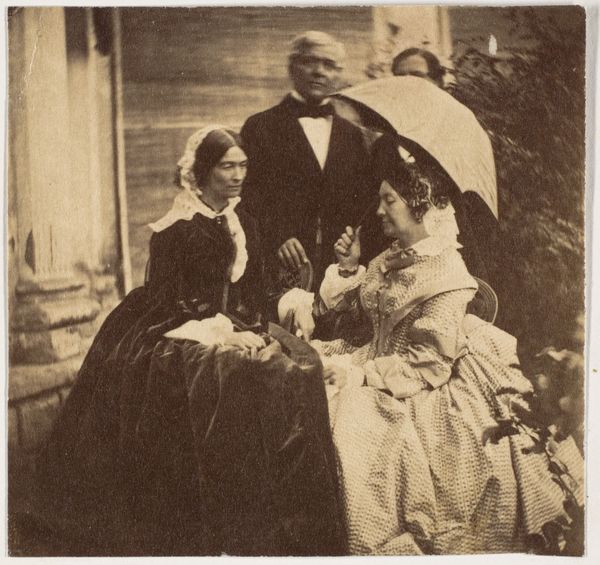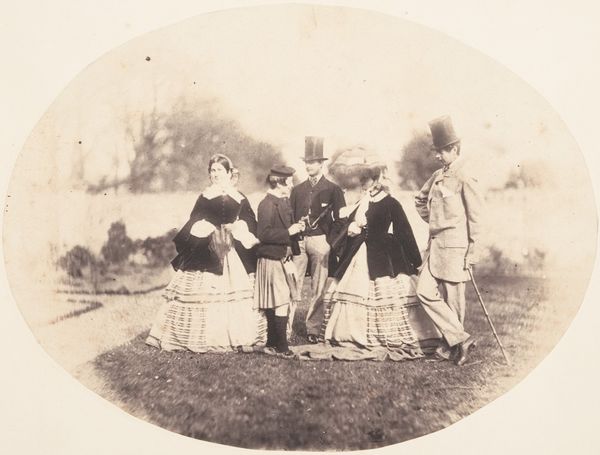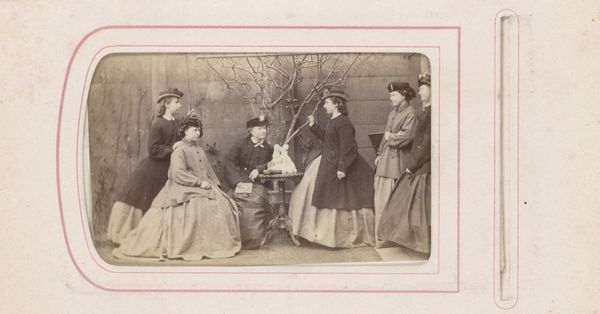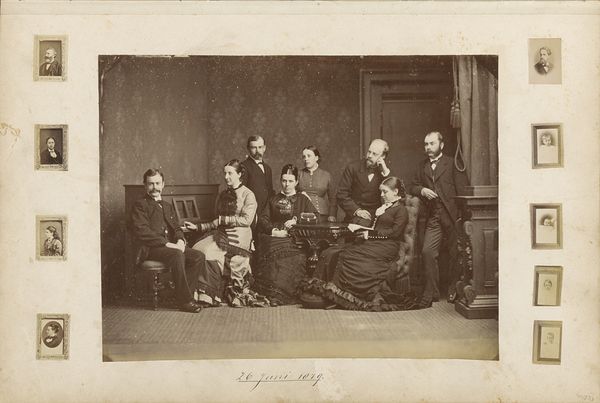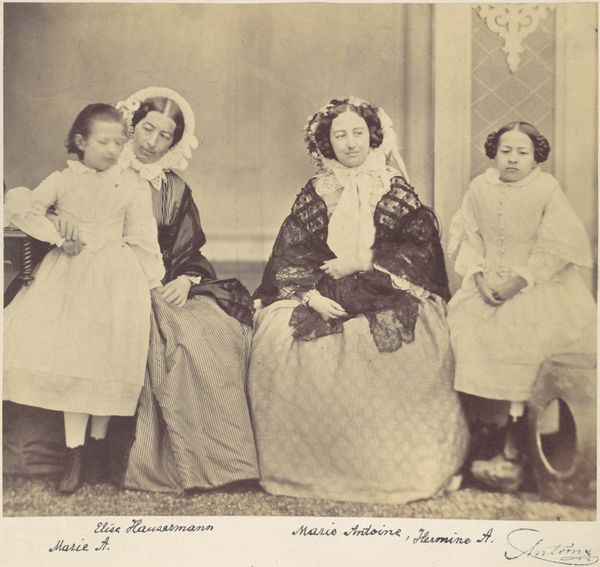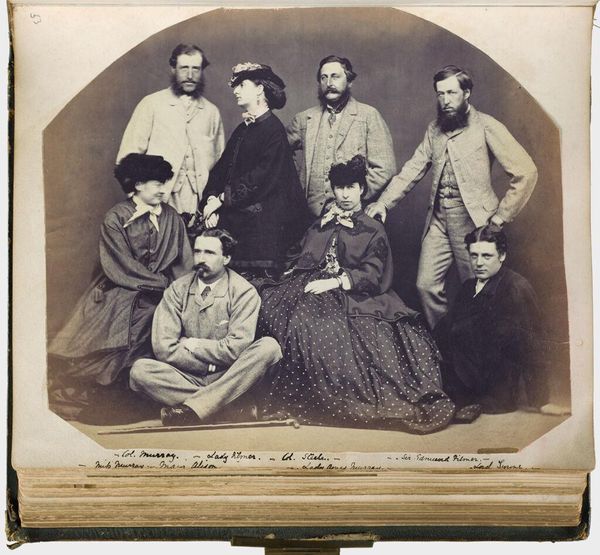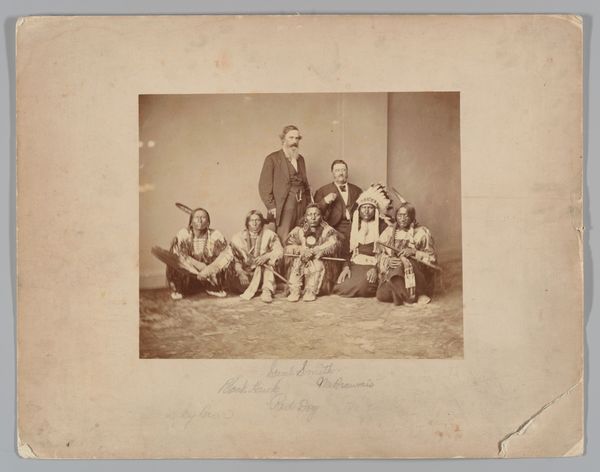![[Group Portrait of Six People] by Franz Antoine](/_next/image?url=https%3A%2F%2Fd2w8kbdekdi1gv.cloudfront.net%2FeyJidWNrZXQiOiAiYXJ0ZXJhLWltYWdlcy1idWNrZXQiLCAia2V5IjogImFydHdvcmtzL2MxYzY5ODkwLTdhMjktNGI3OS05NDRiLTJjZjllMzk1NjcyMS9jMWM2OTg5MC03YTI5LTRiNzktOTQ0Yi0yY2Y5ZTM5NTY3MjFfZnVsbC5qcGciLCAiZWRpdHMiOiB7InJlc2l6ZSI6IHsid2lkdGgiOiAxOTIwLCAiaGVpZ2h0IjogMTkyMCwgImZpdCI6ICJpbnNpZGUifX19&w=3840&q=75)
photography, gelatin-silver-print
#
portrait
#
photography
#
historical photography
#
group-portraits
#
gelatin-silver-print
Copyright: Public Domain
Editor: This is an intriguing photograph, a gelatin silver print, likely from the 1850s or 60s. The Metropolitan Museum calls it "[Group Portrait of Six People]". What strikes me is how carefully arranged the subjects are. What visual elements stand out to you? Curator: The composition certainly invites formal analysis. Note the rigid symmetry employed in the arrangement of the individuals. The ornate architectural backdrop provides a structured setting that accentuates the hierarchical arrangement. Consider how the photographer uses light and shadow to define the forms and create a sense of depth, despite the limited tonal range of the gelatin silver print. The pose and the gaze direction invite the observer into the realm of representation and demand decipherment. Editor: It feels like everyone is purposefully *not* looking at each other. The light from the background is slightly blown out as well. What could that asymmetry between the group’s posture and the backdrop's symmetry mean? Curator: The directionality of gaze could certainly represent an implicit discourse. Notice also how the adults seem tethered while the children seem placed in an ascending diagonal that subverts any reading of linearity. We are prompted to analyze the work through its formal elements to deduce a potentially unstable system of relationships. Editor: So, the formal elements hint at underlying tensions. That’s not what I initially thought, but it makes sense. Thanks. Curator: Indeed, such careful observation yields greater interpretive power. This is a fascinating example of photography’s early manipulation of representation and self-consciousness in constructing group dynamics.
Comments
No comments
Be the first to comment and join the conversation on the ultimate creative platform.
